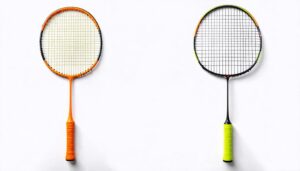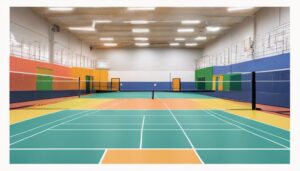When comparing pickleball and tennis, you’ll notice they cater to different preferences. Pickleball, with its smaller court and simple rules, emphasizes community and strategy, making it accessible for all ages. Tennis, a historic sport, requires more space and showcases powerful gameplay and deeper tactical intricacies. Each has distinctive equipment that affects control and power, plus varied health benefits. While both promote fitness and companionship, their community cultures differ markedly. If you’re curious about how these elements impact gameplay and overall enjoyment, you might find it beneficial to explore further.
Overview of Pickleball

When you step onto a pickleball court, you’re entering a unique blend of fun and competition that appeals to players of all ages. Understanding the sport’s history can deepen your appreciation for its charm. Pickleball originated in 1965 on Bainbridge Island, Washington, when a few dads wanted to create a game that their kids could enjoy. They combined elements of badminton, tennis, and table tennis, leading to the sport’s distinct character.
As you play, you’ll notice the versatility of pickleball variations. There are singles and doubles formats, allowing for different levels of engagement and strategy. You might prefer the fast-paced action of doubles, which fosters teamwork, or the individual challenge of singles, where every point relies solely on your skills. Each variation not only enhances the competitive spirit but also adapts to players’ preferences and abilities.
The simplicity of the rules makes it accessible, yet there’s an underlying complexity in mastering techniques, serving strategies, and court positioning. This balance invites players to experiment, helping you find your unique style within the game.
As you dive deeper into pickleball, you’ll discover a community that celebrates both competition and camaraderie. This sport is more than just a pastime; it’s a social experience that encourages freedom of expression and personal growth. Whether you’re just starting out or have been playing for years, pickleball offers an engaging journey that’s as rich as its history and as varied as its playing styles.
Overview of Tennis
While pickleball offers a unique charm, tennis stands as a cornerstone of racquet sports, boasting a rich history and global appeal. You can trace tennis history back to the late 12th century, evolving from a game played by monks in France. Over centuries, it transformed into the modern sport we recognize today, characterized by its dynamic gameplay and strategic depth. This evolution reflects the spirit of innovation and adaptation that tennis embodies.
One of the most intriguing aspects of tennis is its prestigious tournaments. Events like Wimbledon, the US Open, and the French Open are not just competitions; they’re cultural phenomena. You can feel the electric atmosphere as you watch the world’s top players clash on the court, showcasing their skills, endurance, and mental fortitude. Each tournament carries its own traditions and challenges, from the grass of Wimbledon to the clay of Roland Garros, offering a unique experience for players and fans alike.
Tennis isn’t just about physical prowess; it’s a mental game that requires focus, strategy, and resilience. As you immerse yourself in this sport, you’ll appreciate the blend of athleticism and intellect that makes tennis so enthralling. Whether you’re playing for fun or competing at a high level, the freedom to express yourself through your style and strategy is what makes tennis a timeless passion. So, if you’re looking for a sport that combines history, excitement, and a vibrant community, tennis is an excellent choice.
Equipment Comparison
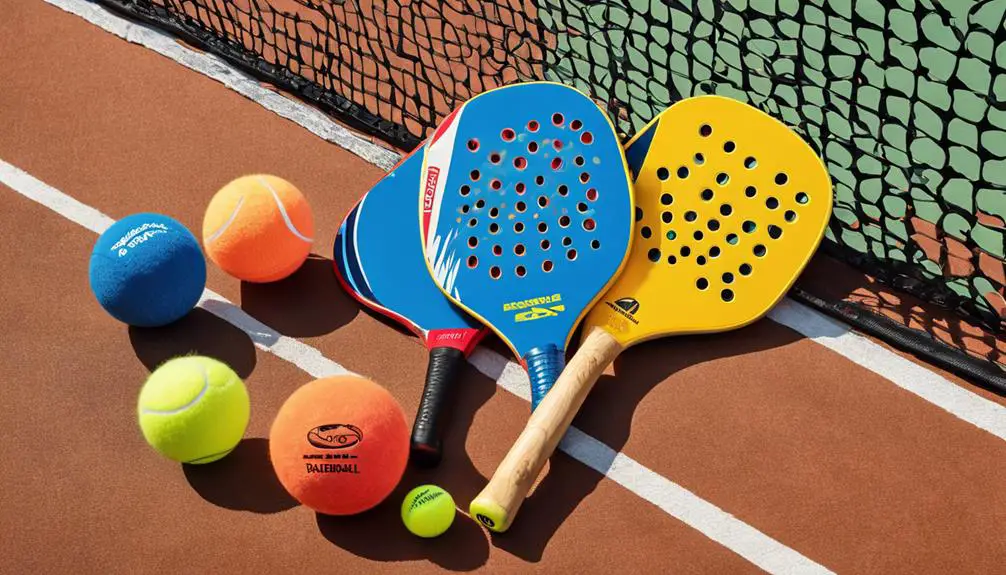
Often overlooked, the equipment used in pickleball and tennis plays a significant role in shaping the playing experience and performance. While both sports may seem similar at first glance, the differences in their equipment can greatly impact how you play and enjoy the game.
- Paddle Types: In pickleball, paddles are typically made from composite materials, wood, or even polymer. Their varying weights and surface textures can influence your control and power. Tennis, on the other hand, uses rackets that are strung with nylon, polyester, or natural gut, offering a different feel and response upon impact.
- Ball Materials: The balls themselves differ as well. Pickleball uses a lightweight plastic ball with holes, designed for slower play and more strategic rallies. This can create a unique challenge, especially for beginners. Tennis balls, made from a rubber core and covered with felt, provide a faster-paced game and require more power to control.
- Footwear: The type of shoes you wear matters too. Pickleball players often choose court shoes designed for lateral movement, while tennis players might opt for specific tennis shoes that provide stability on the court.
Understanding these differences in equipment can enhance your gameplay and enjoyment, whether you prefer the finesse of pickleball or the intensity of tennis. Ultimately, choosing the right gear empowers you to express your style and strategy on the court, fostering a sense of freedom in how you play.
Court Size and Layout
The dimensions and layout of the courts for pickleball and tennis greatly influence gameplay and strategy. Understanding these differences can help you appreciate each sport’s unique characteristics.
Pickleball courts are smaller, measuring 20 feet wide and 44 feet long for doubles play, while tennis courts are notably larger at 36 feet wide and 78 feet long. This size difference means that pickleball emphasizes quick reflexes and strategic positioning, whereas tennis allows for more powerful shots and longer rallies.
Both sports also utilize different surface materials. Tennis courts can be made from grass, clay, or hard surfaces, each altering the ball’s speed and bounce. On the other hand, pickleball courts are typically made from smooth, hard surfaces to facilitate swift play and reduce friction.
Here’s a quick comparison of the court dimensions and surface materials:
| Sport | Court Dimensions (Width x Length) | Common Surface Materials |
|---|---|---|
| Pickleball | 20 ft x 44 ft | Hard surfaces (e.g. asphalt) |
| Tennis | 36 ft x 78 ft | Grass, clay, hard surfaces |
This table clearly highlights how the court dimensions and surface materials shape the gameplay dynamics in each sport. As you dive deeper into pickleball or tennis, you’ll notice how these factors influence your approach, serving techniques, and overall enjoyment of the game. Knowing the layout can empower you to enhance your skills and strategies on the court.
Rules and Scoring Systems
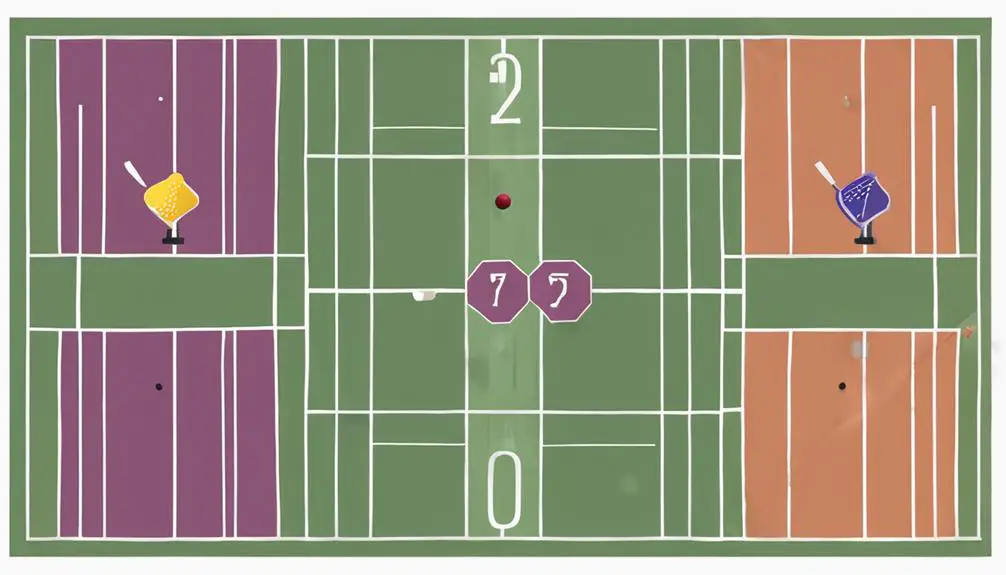
Understanding the court size and layout sets the stage for grasping the rules and scoring systems of pickleball and tennis, as these elements are closely intertwined with gameplay. When you step onto the court, knowing the rules and how points are scored can drastically impact your experience and strategy.
Here are three key aspects to examine:
- Scoring Differences: In pickleball, you can only score when serving, and games typically go to 11, 15, or 21 points, depending on the format. In contrast, tennis employs a more complex system, where both players can score regardless of who served, with sets often played to six games.
- Fault Rules: Both sports have unique fault rules. In pickleball, a fault occurs when the ball lands outside the court, fails to clear the net, or is hit before it bounces on your side. In tennis, faults can happen during the serve (like double faults) or when players hit the ball out of bounds.
- Game Structure: Tennis matches are often played in sets and games, while pickleball can utilize a simpler format, making it more accessible. The flexibility in scoring allows players to adapt their strategies more freely in pickleball.
Understanding these rules and scoring differences not only helps you play better but also enhances your appreciation of each game’s unique flow and excitement.
Gameplay Strategies
When you step onto a pickleball or tennis court, your strategy can make all the difference in your performance. Understanding the nuances of offensive strategies and defensive tactics is essential for gaining an edge. In pickleball, you might focus on precise shot selection to exploit your opponent’s weaknesses, while in tennis, powerful groundstrokes can dictate the game’s pace.
Court positioning is another crucial aspect. In pickleball, you’ll want to stay near the non-volley zone to control the net and apply pressure. Conversely, in tennis, retreating to a strong baseline position can allow you to set up for powerful shots. Observing your opponent’s movements helps refine your strategies; noticing their preferred shots or areas they struggle with can guide your approach.
Player communication is essential in doubles play, whether it’s calling shots or coordinating strategies. Making sure you’re on the same page not only enhances performance but also builds confidence. Match analysis post-game can provide insights into what worked and what didn’t. Reflecting on your shot selection and tactical decisions can improve your future gameplay.
Lastly, maintaining an adaptable game pace allows you to dictate the flow of the match. Slowing the game can frustrate an aggressive opponent, while quickening the pace might catch a more defensive player off-guard. By mastering these gameplay strategies, you’ll find yourself not just playing the game, but reshaping it to your advantage.
Health Benefits and Fitness
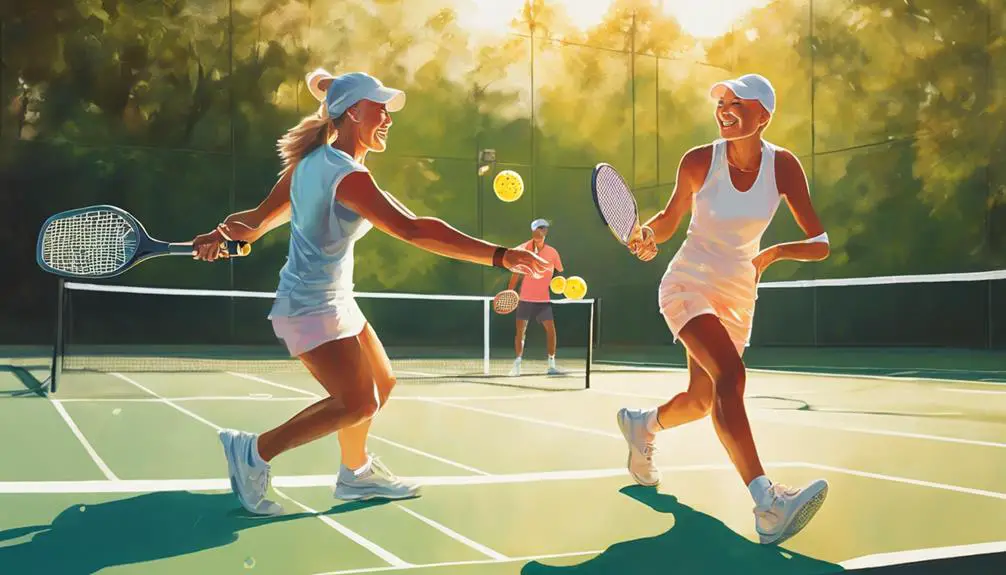
Both pickleball and tennis offer unique gameplay experiences, but they also provide significant health benefits that contribute to overall fitness. When you step onto the court, you’re not just playing a game; you’re actively improving your physical well-being.
Both sports are fantastic for cardiovascular improvements, helping you build endurance and keep your heart healthy. The quick movements and constant changes in pace get your heart pumping, providing an aerobic workout that burns calories and boosts your stamina.
Consider these key health benefits:
- Joint Health: The low-impact nature of pickleball makes it an excellent choice for those looking to minimize stress on their joints while still enjoying a vigorous game. Tennis, while slightly more demanding, also promotes flexibility and strength in your joints, as you engage in various lateral movements.
- Muscle Tone: Both sports engage multiple muscle groups, helping you tone your arms, legs, and core. Whether you’re serving in tennis or dinking in pickleball, you’re building strength without even realizing it.
- Mental Well-Being: Engaging in these sports can uplift your mood, reducing stress and anxiety. The focus required during gameplay shifts your attention away from daily worries, allowing you to enjoy a sense of freedom and fulfillment.
Incorporating either sport into your routine not only enhances your physical health but also enriches your mental state, making both pickleball and tennis rewarding choices for a healthier lifestyle.
Community and Culture
Community and culture play a pivotal role in the experiences surrounding pickleball and tennis, shaping not only how players engage with the sports but also how they connect with one another. The social dynamics within each sport reveal distinct player demographics that influence community participation. Tennis has traditionally attracted a more competitive crowd, often appealing to those with a higher socioeconomic status. In contrast, pickleball is rapidly breaking down barriers, promoting inclusivity and accessibility factors that draw a diverse age range into recreational leagues.
Regional popularity also affects how communities embrace these sports. In areas where tennis courts are abundant, you’ll find organized tournaments and well-established clubs, fostering a culture of competition. However, in regions where pickleball has gained traction, community events are often more casual, focused on fun rather than fierce rivalry, reflecting a shift in cultural influences.
Age diversity is another critical aspect to contemplate. While tennis tends to skew older, pickleball appeals to all generations, creating a unique intergenerational bond among players. This blend of ages enriches the social fabric, encouraging mentorship and camaraderie.
Ultimately, the community and culture surrounding pickleball and tennis not only inform how you experience the games but also shape your connections with fellow players. Whether you’re smashing serves on a tennis court or dinking at the net in pickleball, it’s clear that these sports offer more than just physical activity—they foster a sense of belonging and shared passion.
Frequently Asked Questions
What Age Groups Typically Play Pickleball and Tennis?
When considering demographic trends, you’ll notice that both sports attract various age preferences. Younger players often gravitate towards fast-paced games, while older players appreciate the social aspect, making both activities inclusive for all ages.
Can Pickleball Be Played Indoors or Only Outdoors?
You’ll be amazed to know you can play pickleball anywhere—indoor facilities or outdoor courts! This flexibility allows you to choose your setting, making it perfect for anyone seeking freedom in their game.
How Do Weather Conditions Affect Gameplay in Both Sports?
Weather conditions greatly influence gameplay. Wind impacts ball trajectory, while court surface can affect traction. You’ll find that adapting your strategy to these elements is essential for maintaining performance and enjoying the game fully.
Are There Professional Leagues for Pickleball Similar to Tennis?
Imagine stepping onto a vibrant court, energy buzzing. Yes, there are professional organizations for pickleball with structured leagues, offering players a chance to compete fiercely, just like in tennis, while celebrating their love for the game.
What Common Injuries Are Associated With Pickleball and Tennis?
When playing racquet sports, you might experience shoulder injuries, ankle sprains, elbow pain, and wrist strain. Understanding these risks helps you stay mindful, allowing you to enjoy the game while minimizing potential setbacks.



